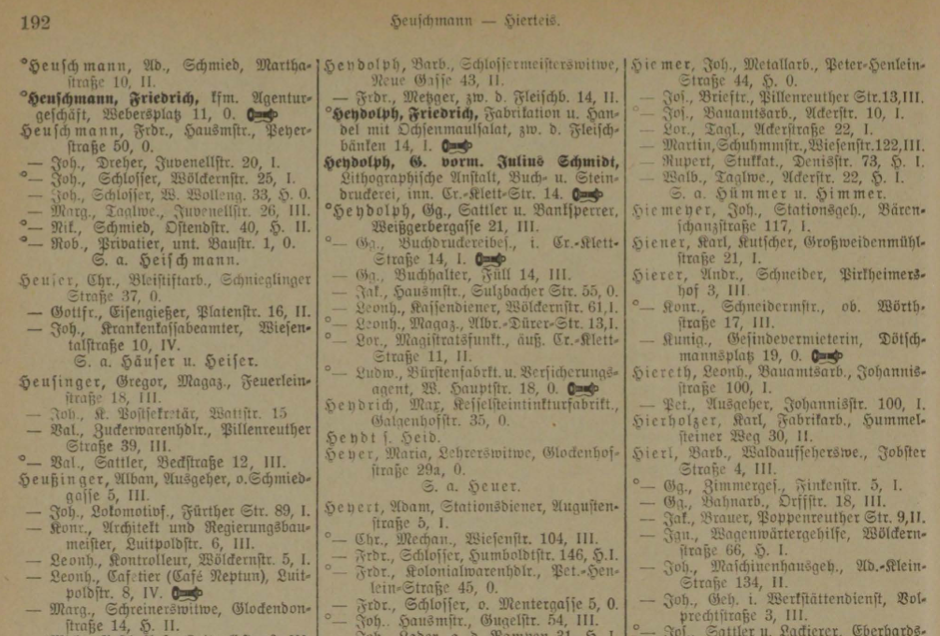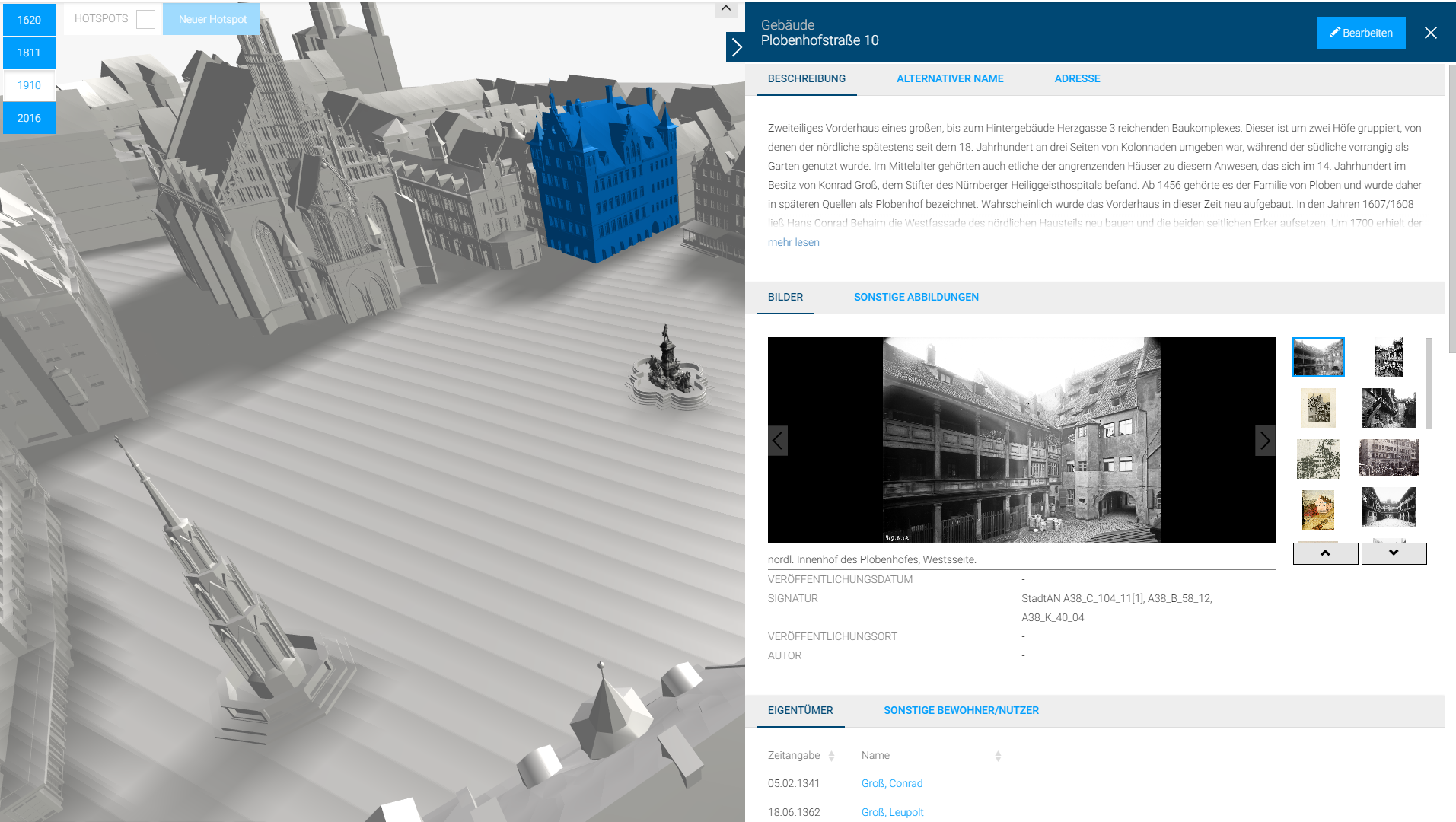The Nuremberg Address Knowledge Graph
What is NA-KG
Within the TRANSRAZ research project, Nuremberg and the development of its architecture and culture is recreated from the 17th to the 21st century. It will be available for researchers and the public by means of an interactive 3D environment. Goal of this contribution is to discuss the ongoing work of connecting heterogeneous historical data from sources previously hidden in archives to the 3D model using knowledge graphs for a scientifically accurate exploration of Nuremberg.
The NA-KG is based on unstructured data extracted from the address book of Nuremberg 1910. The book contains information about historical residents - their names, occupations and place of works, their property and residential addresses, and historical organizations - names, industries, business owners and address information.

67K Persons
9K Occupations
1K Organizations
Workflow
The scanned images of the address book were first transformed into plain text via the OCR system. Based on the syntactic structure of the text, the noisy OCR output was then first segmented into person and company entries, and then into the individual entry components via developing a set of regular expressions. To normalize orthographic errors committed during creation of the address book, errors produced by the OCR, as well as to resolve the abbreviations in street names, existing reference vocabularies were used. The extracted data was used to populate the NA-KG.

Exploration
The exploration of historical data in the NA-KG is of great value for historical scientists and digital humanists intending to study the developments of the city and life of its residents in the beginning of the 20th century. For example, the existing KG is able to answer what was the ratio of persons with civil rights to persons without civil rights. And based on this information to analyse what persons in higher social class did for a living and where they lived. Historians also may draw statistics like what was the most common profession/name in 1910, what was the central business district of Nuremberg, where did most of the artists live, what district offered public education. Thus, the provided address book data allows to explore not only the whereabouts of Nuremberg inhabitants but also their social status, family relations and business developments.

Querying NA-KG
Download NA-KG
Execute Queries using Google Collab
Query NA-KG using the following prefixes:
PREFIX transraz: <http://transraz/> PREFIX ab: <http://transraz/addressbook#> PREFIX vcard: <http://www.w3.org/2006/vcard/ns#> PREFIX schema: <http://schema.org/> PREFIX owl: <http://www.w3.org/2002/07/owl#> PREFIX dbo: <http://www.dbpedia.org/ontology/> Example 1
Query: Count the number of citizens who were granted civil rights.
Counting the number of citizens with civil rights and comparing it with the entire number of Nuremberg’s population provides a deeper overview of social life in historical Nuremberg.
SELECT ?civilRights (COUNT(?civilRights) as ?counter_cvR)
WHERE { ?Individual rdf:type vcard:Individual ;
transraz:civilRights ?civilRights . }
GROUP BY ?civilRights
ORDER BY DESC (?counter_cvR)
Example 2
Query: Count the frequency of each occupation mentioned in the address book.
This query gives the idea on the structure of the labour market in Germany in the beginning of the 20th century.
SELECT ?name (COUNT(?name) as ?frequency)
WHERE { ?Individual schema:hasOccupation ?Occupation .
?Occupation rdfs:label ?name .}
GROUP BY ?name
ORDER BY DESC (?frequency)
Example 3
Query: Count the number of companies for each street in Nuremberg.
To visualize the most or the least urbanized streets of Nuremberg is essential to understand the development of the industrial areas of the city.
SELECT ?Streetname (COUNT(?Streetname) as ?frequency)
WHERE {?Organization rdf:type vcard:Organization ;
vcard:hasAddress ?AddressID .
?AddressID vcard:hasStreetAddress ?Street .
?Street rdfs:label ?Streetname . }
GROUP BY ?Streetname
ORDER BY DESC(?frequency)
